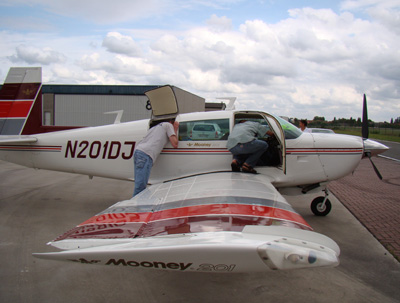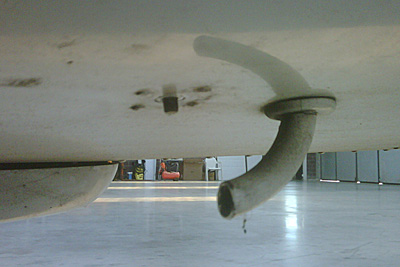I had flightplanned to Albert and Dieppe from Kortrijk with the Mooney with two new friends Erik & Dany. The idea was to sharpen my IFR skills and to show the airplane to them. I thoroughly preflighted the aircraft, which just came out of its annual. This flight was planned for quite some time and through some iterations already, so I was keen to go …


So here is the emotional description on what happened after refuel and taxi … :
* On takeoff, I called 40 knots, 45, 50 and the Mooney started climbing away already… it only does this at around 70 knots …. bizarre
* I let it fly in a very shallow attitude, and it did it perfectly, except the airspeed sunk to about 40 knots, no stall warning, engine OK. I was not falling out of the sky at 40 knots ! Bizarre …
* Airspeed erratically increased and decreased and then I realised something was wrong with the instrument. I was thinking what else could give me airspeed information: GPS, RPM/MAP to continue safe flight
* Then I saw that the altimeter showed a temporary sink of 500 ft …. but I was still flying normally and was climbing… No way I had sunk 500 ft … Then I realised that the static system must be wrong. My theory IFR courses sprung to mind …
* I told Kortrijk Info that I would return with a static problem, and they gave me priority. I didn’t declare an emergency as I did not feel it like an emergency
* Then I realised I could select Alternate Static above my left knee … I pulled the knob and that solved all troubles
* Made a normal (crosswind) landing and called it a day
Strangely I never tought of checking the POH during the flight, neither of breaking the glass of the VSI as this was not necessary anymore. During the emergency, which took only like a minute, I remained calm: the Aviate-Navigate-Communicate mantra did it for me. Nowhere I panicked, nowhere I defocused from flying the craft. Both of my passangers were aware of the quirk, they kept their calm and they both understood the earnest of the situation. I had briefed them beforehand too, which added to the air of professionalism in the air and during the emergency.
Once on the ground and after the engine was shut down, we checked to find a way to drain the static lines, but could not locate the static drain.
On the ground my passengers notified me that the VS indicator was showing condensation at the inside of its glass, a clear indicator of severe moisture in the lines. I believe that thestatic lines pick up moisture from the humid summer air, unless the airplane had been flown in rain or stood outside for a longer period …

Later we found in the POH and on the airplane how moisture can be removed from the static line: there is a small nipple on the bottom of the aircraft. When I pushed it, I retrieved like a teaspoon of water … Thát was indeed the culprit: or how simple water can create an emergency …

My first real inflight emergency, although a small and cureable one. Training and theory courses really help ! From now on, the nipple is added to my checklist !
Thanks for the pictures, Erik !

